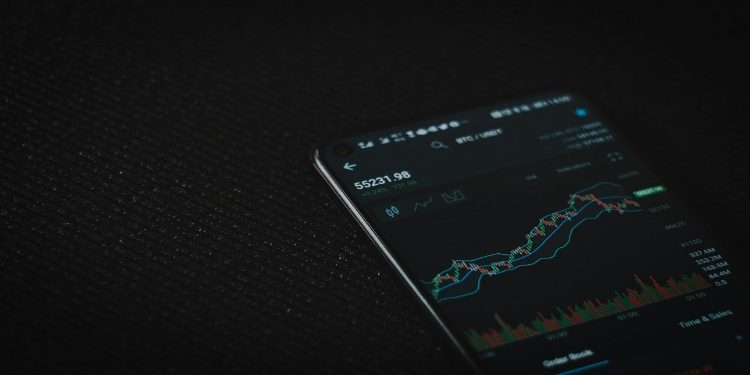Introduction
High-frequency trading (HFT) is a form of trading that uses powerful computers to transact a large number of orders at extremely high speeds. These trades are often executed in fractions of a second, allowing HFT firms to capitalize on small price discrepancies and market inefficiencies. Trading bots play a crucial role in HFT by automating the trading process and executing trades with precision and speed. One such platform, So, if you are a newbie in the world of investing, Biffy Ai can help you by connecting you to one of many investment education firms out there so that you can learn more about investing.
Evolution of High-Frequency Trading
HFT has its roots in the 1980s when financial firms began using computers to automate trading processes. However, it was not until the late 1990s and early 2000s that HFT began to gain significant traction. Advances in technology, such as the development of sophisticated algorithms and high-speed networks, allowed HFT firms to execute trades with unprecedented speed and efficiency.
Today, HFT accounts for a significant portion of trading volume in major financial markets around the world. The evolution of HFT has been driven by a relentless pursuit of speed and efficiency, with firms investing heavily in technology to gain a competitive edge.
Trading Bots in High-Frequency Trading
Trading bots are computer programs that execute trades automatically based on predefined criteria. In the context of HFT, trading bots are used to analyze market data, identify trading opportunities, and execute trades at lightning speed. These bots can execute thousands of trades per second, allowing HFT firms to capitalize on even the smallest price movements.
There are several types of trading bots used in HFT, including market-making bots, which provide liquidity by continuously quoting buy and sell prices, and arbitrage bots, which exploit price discrepancies between different markets or assets. These bots are typically highly sophisticated and use complex algorithms to make split-second trading decisions.
Advantages of High-Frequency Trading with Bots
One of the key advantages of using trading bots in HFT is speed. By automating the trading process, HFT firms can execute trades much faster than human traders, allowing them to capitalize on fleeting market opportunities. Additionally, trading bots can analyze vast amounts of market data and execute trades based on predefined criteria, reducing the risk of human error.
Another advantage of HFT with bots is efficiency. Trading bots can execute trades with minimal human intervention, allowing HFT firms to operate with lower overheads and higher trading volumes. This efficiency can translate into higher profits for HFT firms, as they can take advantage of market opportunities that would be difficult or impossible for human traders to exploit.
Challenges and Risks
While HFT with bots offers many advantages, it also presents several challenges and risks. One of the main challenges is regulatory scrutiny. HFT has come under increased regulatory scrutiny in recent years, with regulators concerned about the impact of HFT on market stability and fairness. Some regulators have implemented measures to curb HFT, such as imposing minimum resting times for orders or requiring HFT firms to provide liquidity during periods of market stress.
Another challenge is market instability. HFT has been blamed for exacerbating market volatility, with some critics arguing that HFT firms amplify market movements by engaging in “quote stuffing” or “flash crashes.” While HFT firms refute these claims, citing their role as market makers and liquidity providers, the debate over the impact of HFT on market stability continues.
Regulatory Environment
The regulatory environment surrounding HFT varies from country to country, with some jurisdictions imposing stricter regulations than others. In the United States, for example, HFT is regulated by the Securities and Exchange Commission (SEC), which has implemented rules such as the “market access rule” and the “order protection rule” to govern HFT activities.
In Europe, HFT is regulated under the Markets in Financial Instruments Directive (MiFID), which aims to increase transparency and investor protection in financial markets. MiFID has introduced measures such as the “tick size regime” and the “double volume cap” to regulate HFT activities and mitigate the risks associated with high-speed trading.
Future Trends and Outlook
Looking ahead, the future of HFT with bots is likely to be shaped by technological advancements and regulatory developments. Advances in artificial intelligence and machine learning could enable trading bots to become even more sophisticated, potentially outperforming human traders in certain markets.
On the regulatory front, regulators are likely to continue monitoring HFT activities closely and implementing measures to mitigate the risks associated with high-speed trading. This could include stricter reporting requirements, increased oversight of HFT firms, and the imposition of limits on trading activity.
Conclusion
In conclusion, trading bots play a crucial role in high-frequency trading, enabling firms to execute trades with unprecedented speed and efficiency. While HFT with bots offers many advantages, it also presents challenges and risks, including regulatory scrutiny and market instability. The future of HFT with bots is likely to be shaped by technological advancements and regulatory developments, with firms and regulators alike seeking to strike a balance between innovation and market stability.
David Prior
David Prior is the editor of Today News, responsible for the overall editorial strategy. He is an NCTJ-qualified journalist with over 20 years’ experience, and is also editor of the award-winning hyperlocal news title Altrincham Today. His LinkedIn profile is here.













































































